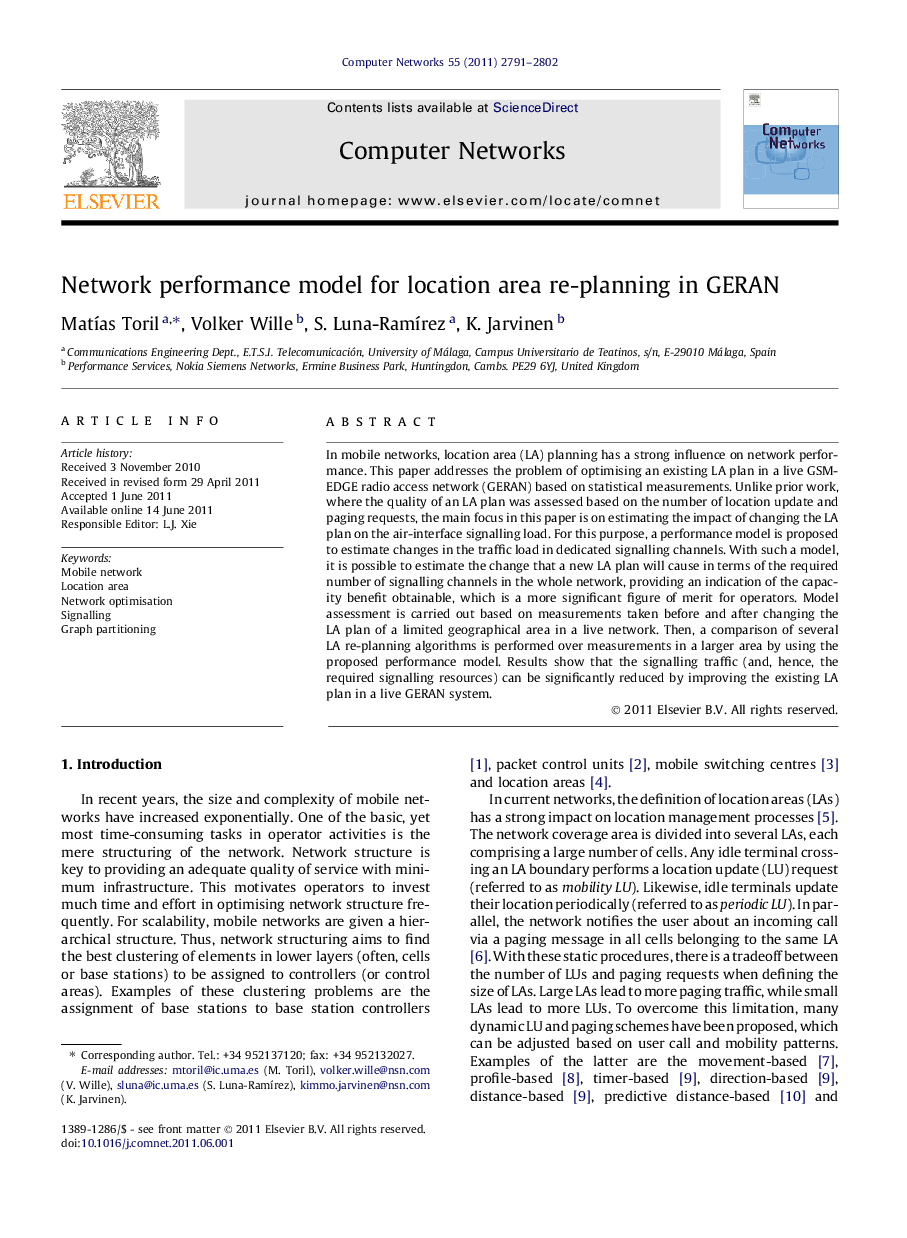| Article ID | Journal | Published Year | Pages | File Type |
|---|---|---|---|---|
| 453035 | Computer Networks | 2011 | 12 Pages |
In mobile networks, location area (LA) planning has a strong influence on network performance. This paper addresses the problem of optimising an existing LA plan in a live GSM-EDGE radio access network (GERAN) based on statistical measurements. Unlike prior work, where the quality of an LA plan was assessed based on the number of location update and paging requests, the main focus in this paper is on estimating the impact of changing the LA plan on the air-interface signalling load. For this purpose, a performance model is proposed to estimate changes in the traffic load in dedicated signalling channels. With such a model, it is possible to estimate the change that a new LA plan will cause in terms of the required number of signalling channels in the whole network, providing an indication of the capacity benefit obtainable, which is a more significant figure of merit for operators. Model assessment is carried out based on measurements taken before and after changing the LA plan of a limited geographical area in a live network. Then, a comparison of several LA re-planning algorithms is performed over measurements in a larger area by using the proposed performance model. Results show that the signalling traffic (and, hence, the required signalling resources) can be significantly reduced by improving the existing LA plan in a live GERAN system.
